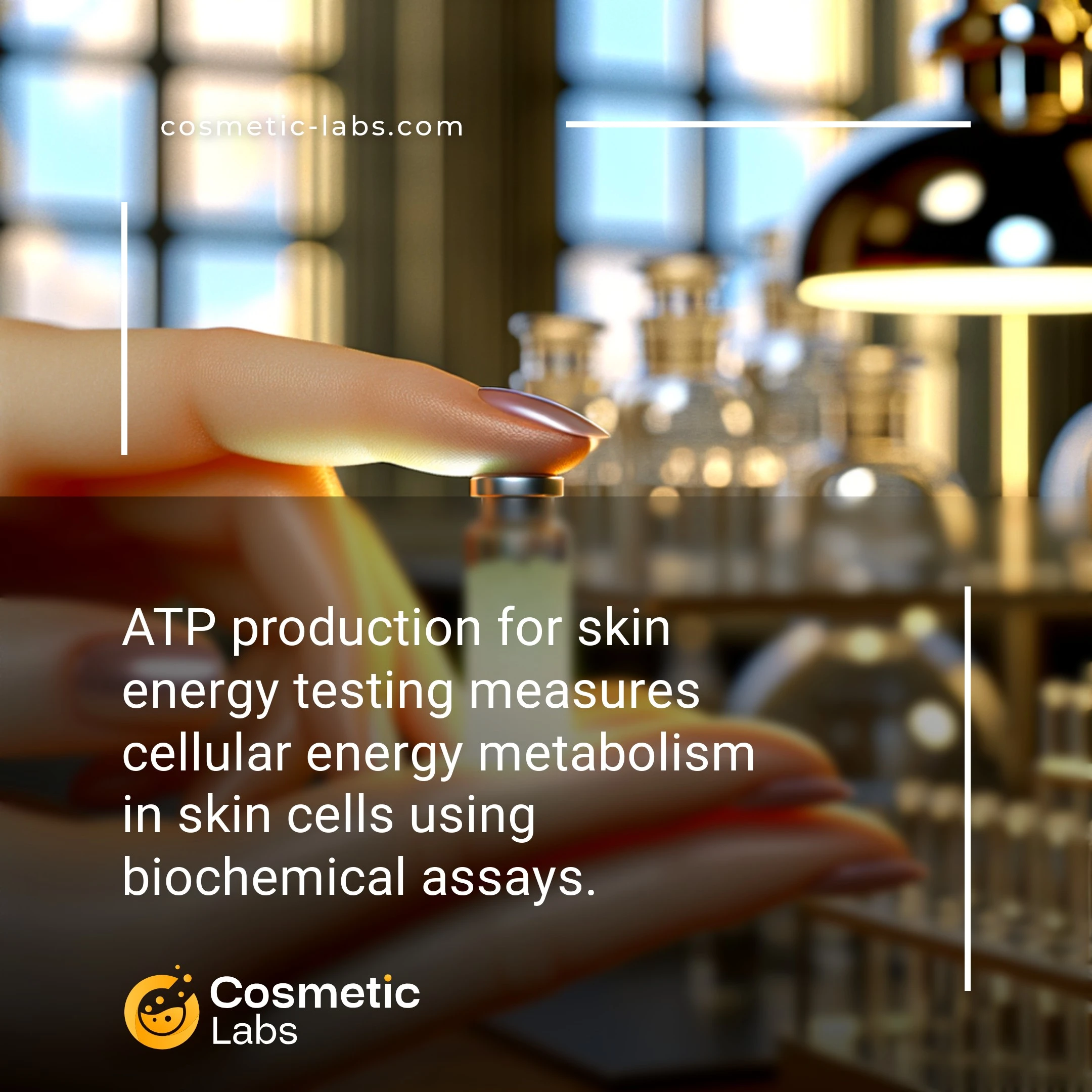ATP Production Testing Services for Skin Energy Validation

What is ATP production?
ATP production testing for skin energy measures how cosmetic ingredients boost cellular energy metabolism in skin cells through adenosine triphosphate synthesis. Labs use specialized assays like luminescence-based ATP quantification to evaluate whether your active compounds increase mitochondrial function and energy output in keratinocytes and fibroblasts. This testing reveals if your anti-aging or revitalizing formulas actually deliver measurable energy enhancement at the cellular level.
Why do you need this service?
Cosmetic labs use ATP production testing to validate anti-aging claims for serums and creams targeting cellular energy enhancement. Brands leverage these assays to demonstrate that their active ingredients boost mitochondrial function in skin cells, providing quantifiable proof for marketing claims about improved skin vitality and reduced fatigue signs.
Who provides ATP production services?
All cosmetic labs providing ATP production services
There is no company providing these services at the moment.
ATP Production Testing for Skin Energy Validation
ATP production testing measures cellular energy output in skin cells to validate how cosmetic ingredients boost metabolic activity. Labs use specialized assays to quantify adenosine triphosphate levels, giving brands concrete data on their formulations’ energizing effects.
Cellular Energy Measurement Protocols
Testing labs run ATP quantification assays on cultured skin cells treated with your active ingredients. These protocols measure baseline energy production, then track changes after ingredient application over 24-48 hour periods.
Standard testing includes:
- Luminescence-based ATP detection using luciferase enzymes
- Mitochondrial activity assessment through respiratory chain analysis
- Dose-response curves to determine optimal ingredient concentrations
- Cell viability checks to ensure results reflect true energy enhancement
Clinical Translation and Documentation
Labs translate ATP data into marketing claims by connecting cellular energy increases to visible skin benefits. They provide detailed reports showing percentage improvements in energy production, statistical significance, and recommended product positioning.
Documentation typically covers:
- Comparative analysis against control groups and competitor ingredients
- Time-course studies showing sustained energy enhancement
- Correlation data linking ATP levels to skin barrier function
Partner labs on our platform can run these preclinical efficacy studies within 2-4 weeks, delivering the scientific backing you need for energy-focused product launches.
Practical Applications of ATP Production Testing for Skin Energy Assessment
Cosmetic labs use ATP production testing for skin energy assessment to validate ingredient performance and support product claims across multiple development stages.
Anti-Aging Product Development and Validation
Labs measure cellular ATP levels in keratinocytes and fibroblasts to demonstrate how active ingredients boost mitochondrial function. This testing supports claims about improved skin vitality and reduced signs of aging. Teams typically run 72-hour exposure protocols using luminescence-based ATP assays to quantify energy production changes.
The data helps brands substantiate marketing claims about cellular rejuvenation and metabolic enhancement. Labs often combine ATP measurements with oxygen consumption rates and lactate production to create comprehensive metabolic profiles for ingredient screening.
Fatigue Recovery and Stress Response Formulations
Cosmetic laboratories evaluate how formulations restore ATP production in skin cells exposed to environmental stressors like UV radiation or pollution. These tests simulate real-world conditions where skin energy metabolism becomes compromised. Labs use stress-recovery protocols that measure ATP depletion and subsequent restoration over 24-48 hour periods.
Results guide formulation adjustments and help brands position products for stressed or fatigued skin. This application proves particularly valuable for urban skincare lines and post-workout recovery products.
| Testing Protocol | Duration | Key Metrics | Application |
|---|---|---|---|
| Baseline ATP measurement | 24 hours | Cellular energy levels | Ingredient screening |
| Stress-recovery assay | 48 hours | ATP depletion/restoration | Environmental protection claims |
| Dose-response testing | 72 hours | Concentration-dependent effects | Formulation optimization |
| Comparative analysis | 96 hours | Ingredient performance ranking | Competitive positioning |
Connect with specialized cosmetic labs on our platform to access ATP production testing services that validate your skin energy claims and support product development goals.
